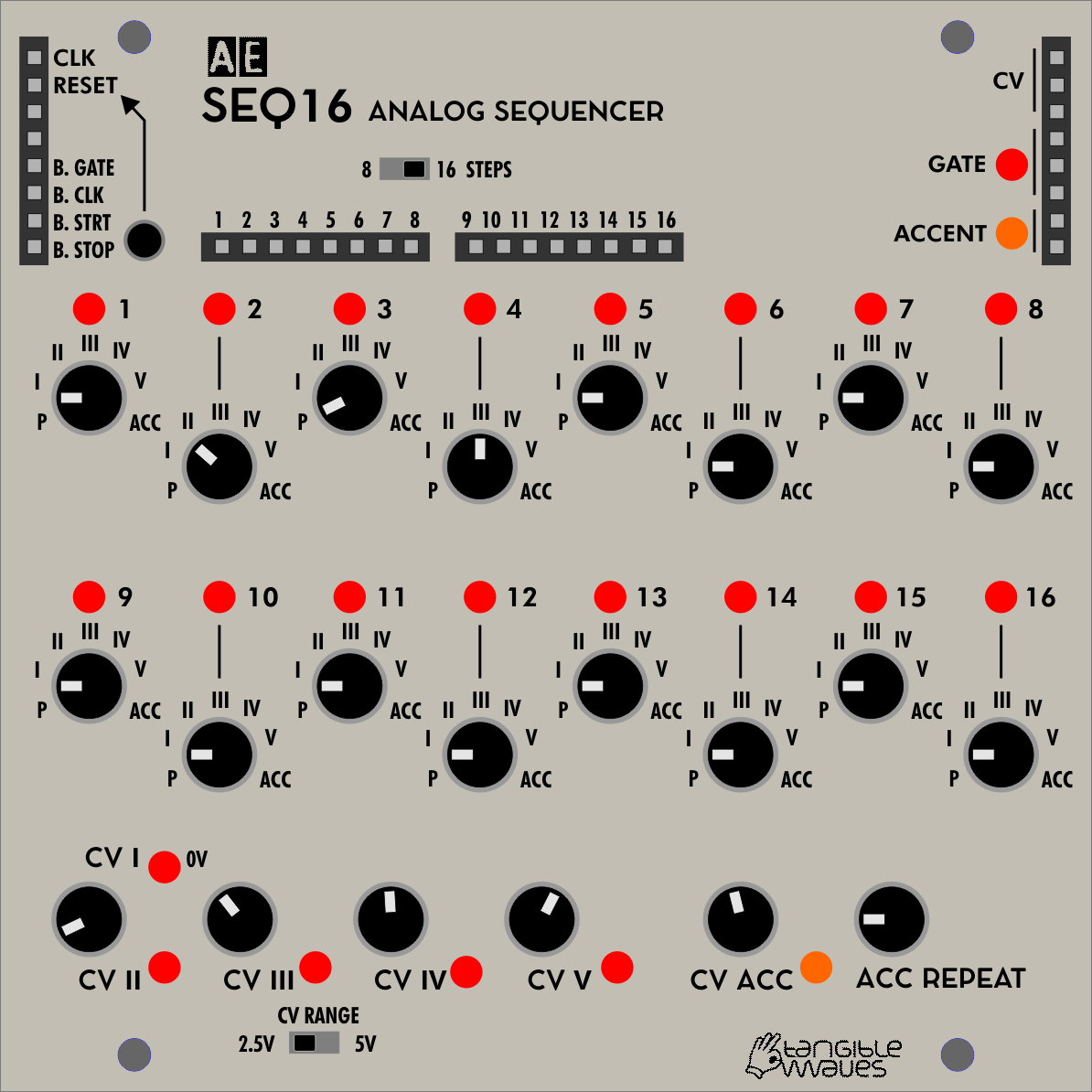

- Exclusively analogue 16 step seq generator#
- Exclusively analogue 16 step seq manual#
- Exclusively analogue 16 step seq full#
- Exclusively analogue 16 step seq series#
Though a master at big bass sounds, Leipzig is exceptionally good at making electronic percussion. This can be toned down of course and nice soft synth sounds are possible too - and everything in between. Leipzig has a huge sound, especially when used for bass (something it excels at!), a fact often commented to us by our customers with great excitement! The mixer / filter can be really overdriven if required giving the synth a really hard sound. The circuits are not stabilised and sanitised by CPUs and the controls are not read by CPUs and quantised.
Exclusively analogue 16 step seq full#
Leipzig-v3 is a 100% analogue synth using circuits that date back to the 1970s and 1980s – these give Leipzig a really old sound that is rich and full of character. Other subtle tweaks, including adding an illuminated power switch. The sequencer can turn off VCO2 square wave on selected beats. We kept the sound the same - it’s what people love - we just added some useful new features….Įxtended the capabilities of the sequencer. Sound wise it is the same - it retains that wonderful angry pure analogue sounds the previous version had. The format is now the more popular desktop type. (They are still referred to as "analog" sequencers nonetheless.) The use of this type of sequencer remains mostly confined to use with modular synths.The new version has been entirely redesigned to improve reliability, quality and other manufacturing considerations. The basic design of analog sequencers today remains the same main improvements have been in reliability and additional features, and some modern designs actually use digital circuitry to control the step selection. The analog sequencer first appeared in the 1960s they were expensive and temperamental beasts, and not very flexible. At the opposite extreme from the multi-row sequencer is the gate sequencer, which does not produce control voltages, only gate signals.


A few sequencers have controls allowing the duration of a step to be increased or decreased, or to select whether a given step causes the gate output to be cycled (allowing notes to be held across steps). Other possible improvements include the ability to "reset" at a given step or to skip selected steps, either of which allows sequences of different lengths to be played. Or, different rows can be fed to different VCOs to play sequenced chords. A row selector can be set up to route a desired row to its output, and to change the selected row each time the sequencer loops through this effectively multiplies the total length of the sequence that can be played, e.g., an 8-step, three-row sequencer can play a sequence of up to 24 individual notes. A multi-row sequencer has two or more control voltage output knobs, each of which outputs a selected control voltage on a separate output bus or "row" when that step is active. Improvements and additions include multi-row designs and output row/bus selectors.

Some have built-in clock generators which can be used to run the sequencer without an external clock source, although the external clock input provides more flexibility.
Exclusively analogue 16 step seq manual#
Most sequencers will have manual controls for stop, start, and reset (return to the first step). A counter determines which step is in control of the output bus at a given time the counter is advanced by an applied clock signal, which determines the tempo of the played notes. Each step has knobs which determines the control voltage and the duration of the gate signal that the step generates.
Exclusively analogue 16 step seq generator#
(In this application, the control voltage that is output is usually routed to a voltage controlled oscillator to control its frequency, and the gate signal is routed to an envelope generator to control the sounding and dynamics of the notes.) The typical sequencer in a modular synth is capable of 8 or 16 steps, whose outputs are all tied to a common output bus.
Exclusively analogue 16 step seq series#
In the context of modular synthesizers, a sequencer generates a series of control voltages and gate signals, usually intended to cause the synth to play a repeating series of notes.


 0 kommentar(er)
0 kommentar(er)
